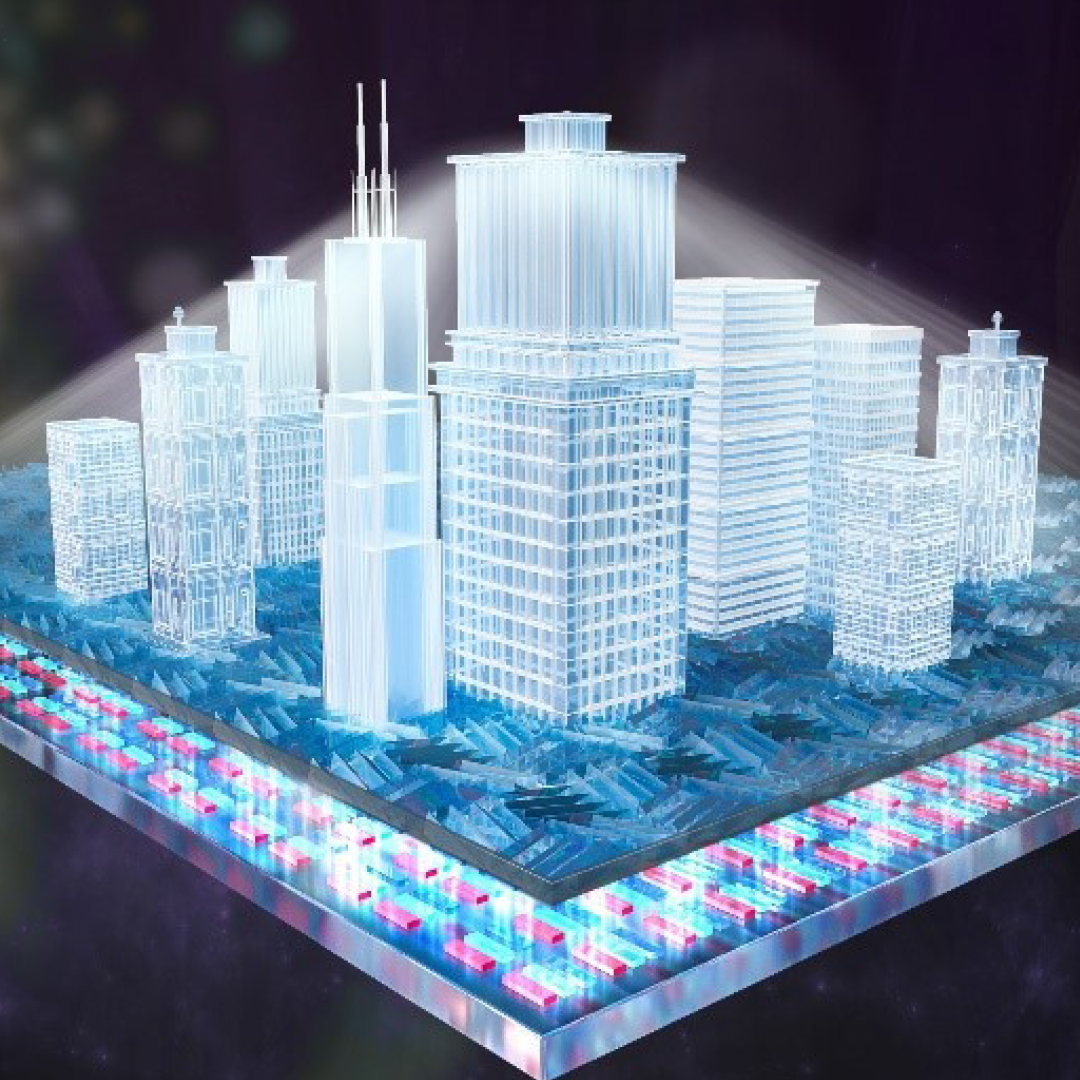Scientists have established a prototype of a glasses-free three-dimensional (3D) light field display system with a considerably extended viewing distance owing to a recently designed flat lens. The system is a crucial step toward small, realistic-looking 3D displays that can be used for portable electronics, televisions and table-top gadgets.
 A new glasses-free 3D light field display system with a significantly extended viewing distance represents an important step toward compact, realistic-looking 3D displays that could be used for televisions, portable electronics, and table-top devices. Image Credit: Wen Qiao, Soochow University
A new glasses-free 3D light field display system with a significantly extended viewing distance represents an important step toward compact, realistic-looking 3D displays that could be used for televisions, portable electronics, and table-top devices. Image Credit: Wen Qiao, Soochow University
Light field displays utilize a dense field of light rays to generate full-color instant 3D videos that can be watched viewed without glasses. This method of producing a 3D display enables a number of people to watch the virtual scene simultaneously, a lot like a real 3D entity.
Most light field 3D displays have a limited viewing range, which causes the 3D virtual image to degrade as the observer moves farther away from the device. The nanostructured flat lens we designed is just 100 microns thick and has a very large depth of focus, which enables a high-quality virtual 3D scene to be seen from farther away.
Wen Qiao, Research Team Leader, Soochow University
The scientists report, in Optica Publishing Group’s journal for influential research, Optica, that their sample display displays excellent efficiency and high color fidelity covering 24 cm to 90 cm viewing distances. These features all unite to form a more lifelike viewing experience.
We developed this new technology in hopes of creating displays that could allow people to feel as if they were actually together during a video conference. With the continued development of nanotechnology, we envision that glasses-free 3D displays will become a normal part of everyday life and will change the way people interact with computers.
Wen Qiao, Research Team Leader, Soochow University
Creating Multiple Views
Light field displays form lifelike images by projecting diverse views that enable the 3D scene to appear the same when seen from various angles. The focal length of the lenses utilized to form these views is the restricting factor in relation to viewing distance.
To surpass this, the scientists meticulously developed a new diffractive flat lens by patterning nanostructures onto a flat surface in such a manner that it directs light. Interlinking a number of these lenses enabled them to make a pixelated view modulator, the optical part that produces the different viewpoints for a scene in a light field display.
A 3D display that offers four views, for instance, would employ four of these lenses, each of which converges the light into an exclusive view.
Because flat lenses provide superior light manipulating capability compared to traditional glass lenses, they can be used to solve formidable problems such as limited motion parallax, crosstalk, visual fatigue and limited viewing distances in 3D displays.
Wen Qiao, Research Team Leader, Soochow University
Testing the Prototype
After demonstrating that the lens accomplished high resolution when focusing the red, green and blue light used by LCDs to form images, the team integrated them into a 4-inch sample 3D light field display with viewing distances ranging from 24 to 90 cm.
The display created a smooth horizontal parallax with a crosstalk under 26% across all viewing distances, which reveals that there were few faults that would result in eye stress or make the image appear unrealistic. The display also demonstrated a light efficiency that reached 82%, a lot higher than other analogous 3D display devices that have been reported.
High light efficiency is crucial for forming a bright virtual image, particularly for applications where power consumption is an important factor, such as portable electronics.
Although the model demonstrated a viewing angle of just 9 degrees, the scientists say this could be expanded to nearly 180 degrees by enhancing the design of the nanostructures employed to create the flat lenses.
As well as exploring this, the team plans to further enhance the light efficiency by formulating a more advanced design algorithm for exploiting the light beam at each pixel. They indicate that easier methods to make the nanostructures would also be needed to enable the feasible manufacture of this kind of display.
Journal Reference:
Zhou, F., et al. (2022) Vector light field display based on an intertwined flat lens with large depth of focus. Optica. doi.org/10.1364/OPTICA.439613.